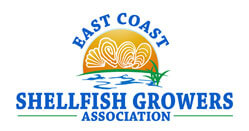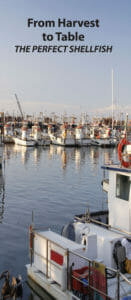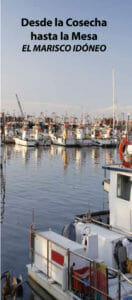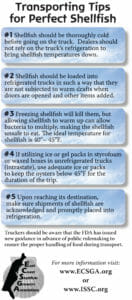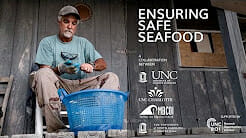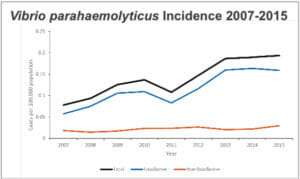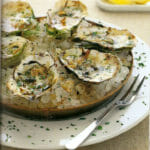Vibrio Resources
The boxes below contain an alphabetical listing of all our ECSGA Vibrio resources.
To jump to a resource, just click on it. Or you can scroll through them the old fashioned way.
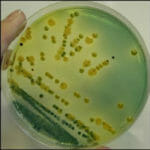 Vibrio Fact Sheet
Vibrio Fact Sheet
Vibrio bacteria occur naturally in many marine environments, BUT they are not related to pollution. Although most Vibrios are benign, many are pathogenic. Two of these pathogenic species, Vibrio parahaemolyticus (V.p.) and Vibrio vulnificus (V.v.) continue to be mixed up in news reports of human illness.
 Vibrio Decision Tree for Growers/Dealers/Enhanced Retail Seafood License Holders
Vibrio Decision Tree for Growers/Dealers/Enhanced Retail Seafood License Holders
The Maine Aquaculture Association created this Vibrio decision tree for aquaculture products to simplify regulatory compliance. Please note that re-submergence is ONLY allowed on an aquaculture lease site, and this decision tree is meant to be used only for aquaculture products.
As of 2024, oyster harvesting in all of Maine’s territorial waters is required to meet Vibrio Control Regulations per Chapter 115, from June 1 to October 15. These regulations apply to all oyster and hard-shell clam harvesting, wild or farmed.
Visit the Maine Vibrio Control Plan page for regulation guidelines, training videos and certification info.
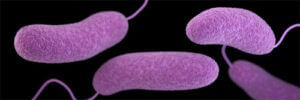 The Truth About Flesh-Eating Bacteria
The Truth About Flesh-Eating Bacteria
Don't believe everything you read in popular media outlets. Those sensational stories get a lot wrong.
Brochures for Consumers, Harvesters and Shippers on Keeping Shellfish Safe
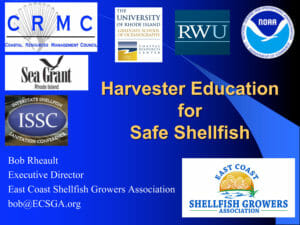 Harvester Education for Safe Shellfish
Harvester Education for Safe Shellfish
The official training curriculum for Rhode Island shellfish growers and harvesters, updated regularly. This pdf of a PowerPoint presentation covers Rhode Island Dept. of Environmental Management/ Interstate Shellfish Sanitation Conference regulations, Vibrio risks and rules, and aquaculture-specific concerns.
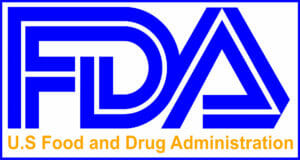 NSSP Guide for the Control of Molluscan Shellfish
NSSP Guide for the Control of Molluscan Shellfish
The National Shellfish Sanitation Program (NSSP) is the federal/state cooperative program recognized by the U. S. Food and Drug Administration (FDA) and the Interstate Shellfish Sanitation Conference (ISSC) for the sanitary control of shellfish produced and sold for human consumption. The purpose of the NSSP is to promote and improve the sanitation of shellfish (oysters, clams, mussels and scallops) moving in interstate commerce through federal/state cooperation and uniformity of state shellfish programs. Under international agreements with FDA, foreign governments also participate in the NSSP. Other components of the NSSP include program guidelines, state growing area classification and dealer certification programs, and FDA evaluation of state program elements.
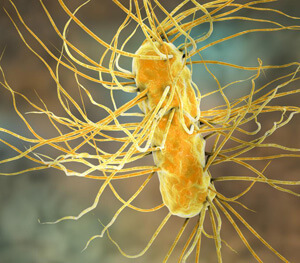 Incubation Periods of Enteric Illnesses
Incubation Periods of Enteric Illnesses
It's human nature to blame the last thing you ate for a foodborne illness, but if symptoms appear within a few hours of ingesting oysters, the odds are good that some other meal (or contact with an infected person) was more likely the cause. The most common source of foodborne (and human contact) gastrointestinal illness is Norovirus - and it has an incubation period of almost two days before onset of symptoms. This article describes average times of symptom onset for various pathogens.
In order of increasing incubation times:
Pre-formed bacterial toxins (Staphylococcus aureus, Bacillus cereus and Clostridium perfringens) had the shortest outbreak incubation periods (4–10 hours);
Vibrio parahaemolyticus (17 hours);
Norovirus, Salmonella and Shigella (32–45 hours);
Campylobacter and Shiga-toxin-producing Escherichia coli had the longest incubation times among bacteria (62–87 hours);
Hepatovirus A, which causes hepatitis A, had the longest overall incubation period of any pathogen studied (672 hours or 28 days).
Ensuring Safe Seafood
This 5-minute video shows how Dr. Rachel Noble and her team at the University of North Carolina at Chapel Hill aim to revolutionize early detection and alert systems for contaminated seafood and ocean waters. Easy-to-use kits will identify harmful bacteria in water and shellfish in only two hours (vs. the current 24 hours), significantly benefiting North Carolina's tourism and seafood industries.
Safe Oysters.org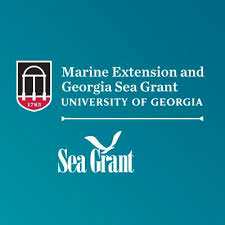
SafeOysters.org is a gateway to Vibrio vulnificus information for health care providers, food and health educators, consumers, fishermen and commercial processors.
ISSC/FDA National Vibrio Workshop Sheds Light on a Vexing Problem
This article by Bob Rheault describes what went on at a September 2017 V.p. workshop focused on reviewing recent research and control plans.
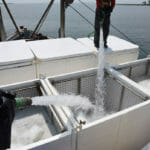 Vibrio parahaemolyticus Illnesses Decline in New England
Vibrio parahaemolyticus Illnesses Decline in New England
This article by Andy dePaola that ran in our June 2017 newsletter describes how the numbers of Vp illnesses linked exclusively to shellfish in the Northeast declined after rapid-cooling controls on oyster harvesting began in 2014.
Toxic Bacteria On The Rise In Shellfish: Will The Raw Bar Make You Sick?
An opinion piece by Katherine Gustafson from Forbes.com.
 CSPI Sues FDA Over Shellfish Safety
CSPI Sues FDA Over Shellfish Safety
FDA Denies CSPI's Petition to Impose Regulations
In May 2016 the Center for Science in the Public Interest (CSPI), sued the Food and Drug Administration (FDA) in federal court to force the agency to regulate Vibrio vulnificus (Vv) in shellfish harvested in Gulf Coast waters and sold for raw consumption. ECSGA Executive Director Bob Rheault offered his take at that time on the CSPI’s efforts to regulate consumers' access to raw shellfish.
But in November 2016 the FDA denied CSPI's petition, stating that both shellfish growers and the agency had made significant progress on reducing illnesses and deaths stemming from Vv.
Rheault commented on the decision in an article by Christine Blank for SeafoodSource.com.
